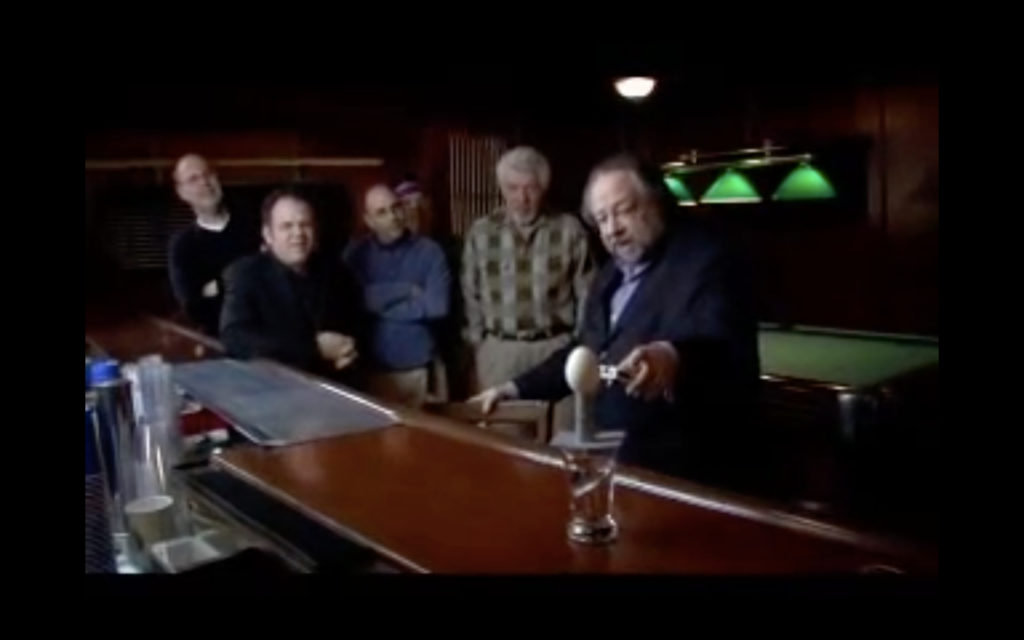
An impossible bet
There’s a video of Ricky Jay at the end of a poker night, doing one last trick for his friends.
He fills a glass with water, puts a playing card on top of it. He then rolls up a second playing card into a little tube and puts this on top of the first playing card, and then puts an egg on top of the tube. “Here’s the bet,” he tells the rest of the guys. “I bet you that by throwing a card I can make the egg land inside the glass. Do I have any takers?”
It’s an impossible bet. The glass is covered by a card so there’s no way for the egg to get through. And all he’s got is some playing cards to throw. Of course, somebody takes him up on the bet. And yet, he throws the card, and gets the egg in the glass.
Today, I worked on a sales page for a video course on cryptocurrency investing. 80% of the sales page was bullets. Warning and danger bullets. Straight up benefit bullets. Curiosity bullets. And peppered in among these, a special breed, which I call impossibility bullets:
- How to get an extra 10% return on your Bitcoin investment — even if the price doesn’t move one bit
- How to take advantage of a crypto bull run — even while you sleep
- How to safely use your cryptocurrencies — even on a computer infected with malware
Now that I’ve pulled them out, I realized they all had the same format:
HOW TO [GENERIC BENEFIT] — EVEN IF [SEEMINGLY INSURMOUNTABLE OBSTACLE]
In all 3 cases, the bullets wrote themselves, because there was an underlying mechanism which offered a surprising benefit. At the same time, I don’t think I could get away with these kinds of bullets too often — people would get skeptical instead of curious. (Unfortunately, copywriting isn’t a magic show — and people don’t like to be fooled by a sales page.) In this case, I think it will work, because the remaining 90% of the bullets are more moderate, and because there is other proof throughout the rest of the copy.


